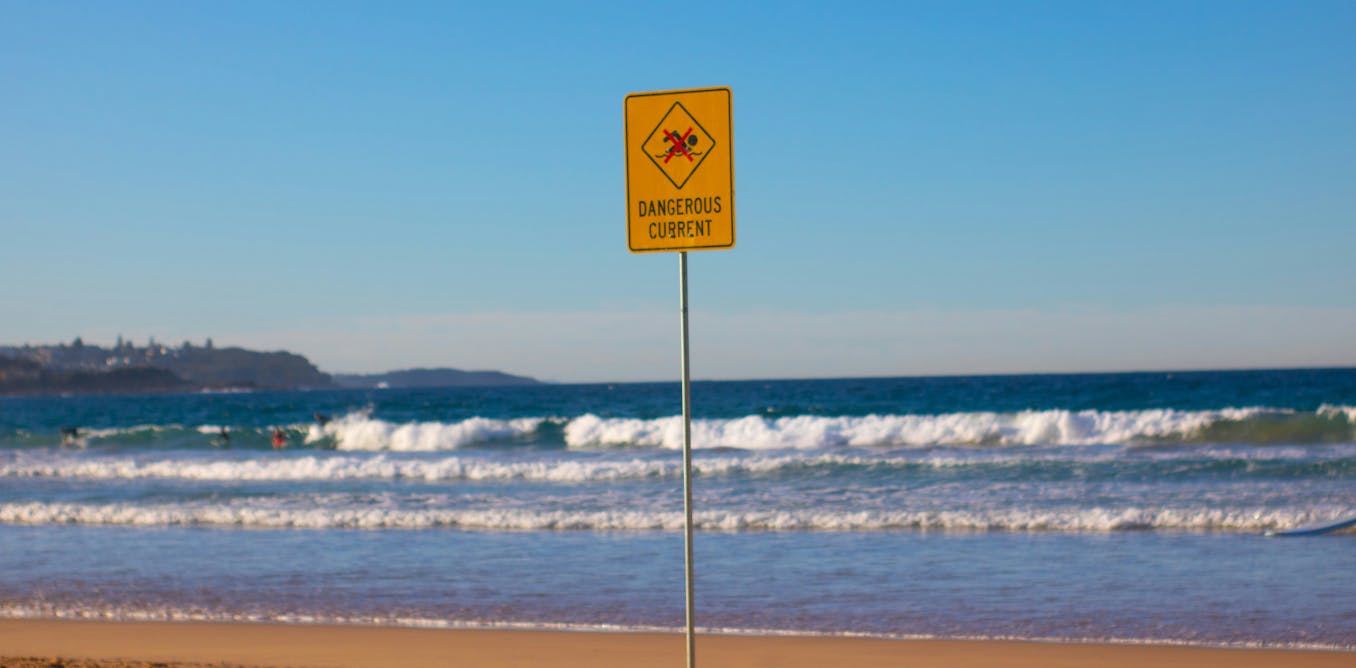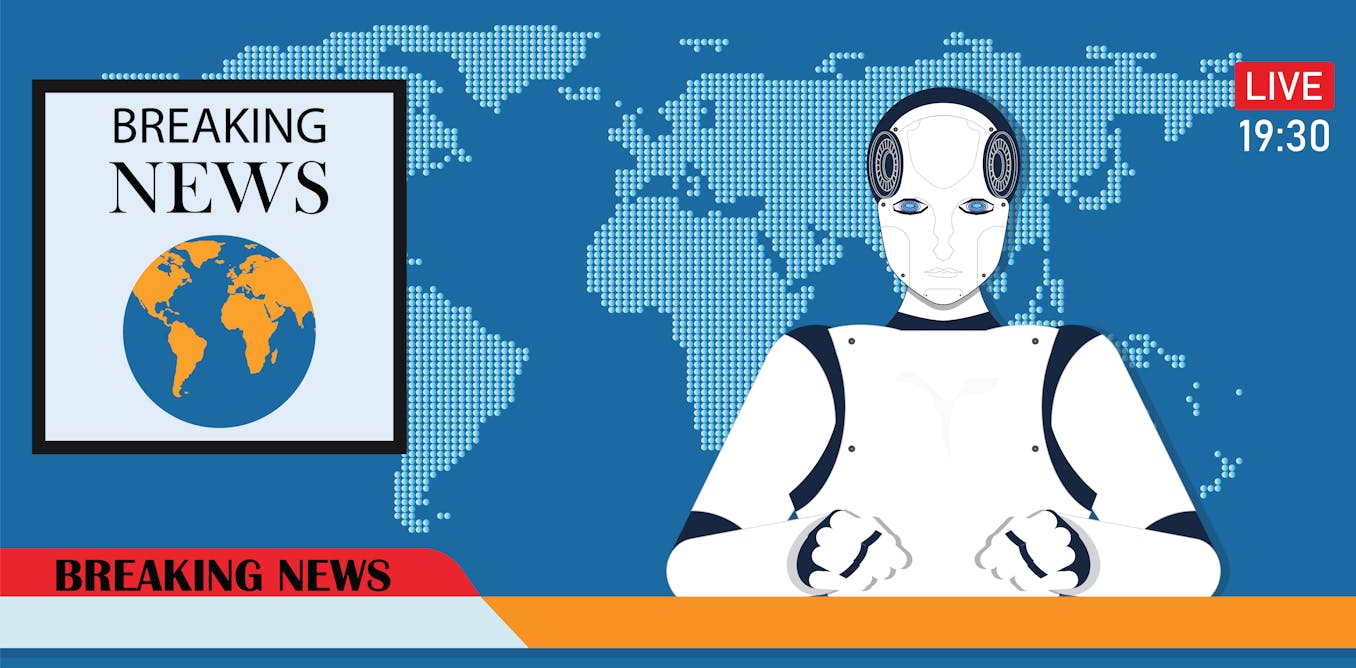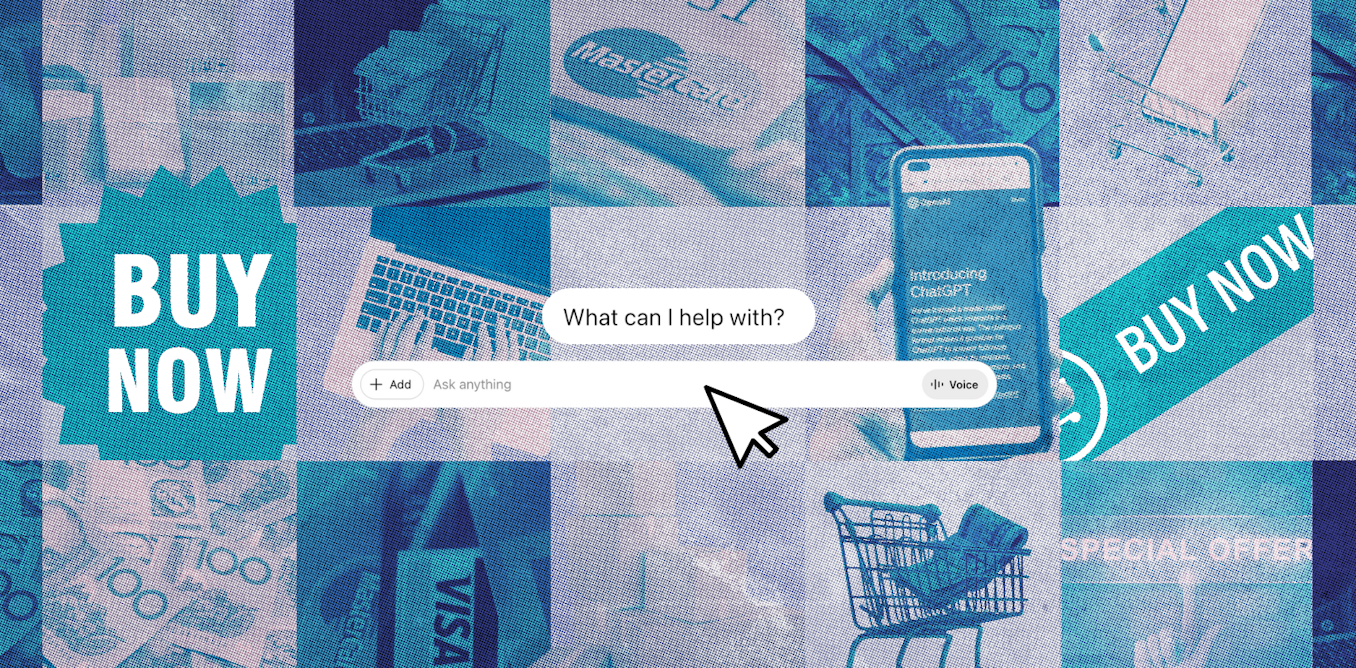The Customer Journey & the Marketing Funnel | Google Digital Marketing & E-commerce Certificate
Digital marketing and e-commerce have revolutionized the way businesses connect with their customers. In a digital age where over 60% of the global population is online, it is essential for businesses to have a strong online presence to remain competitive. However, it’s not just about having a website; it’s about effectively reaching and engaging with potential customers.
The customer journey is a crucial aspect of digital marketing and e-commerce. It is about understanding the needs and pain points of customers, and guiding them through their purchase journey. Rather than focusing solely on sales, a successful digital marketing strategy aims to create awareness, foster trust, and build customer loyalty.
Creating a customer journey map allows marketers to visualize the touchpoints a typical customer encounters along their purchase journey. This in-depth understanding of the customer journey enables businesses to tailor their digital marketing strategies to effectively reach and engage with their target audience.
The course also emphasizes the importance of measuring marketing performance, as it allows businesses to adapt and improve their digital strategies for continued success. Digital marketing is constantly evolving, but the fundamentals of understanding customer behavior and creating meaningful interactions remain essential for businesses to thrive in an online marketplace.
Watch the video by Google Career Certificates
Video Transcript
[MUSIC PLAYING] SPEAKER: Welcome back. Earlier in the course, you learned how digital marketing and e-commerce are continuing to change the business landscape. You found out a little about careers in these industries, including core skills, day-to-day responsibilities, job titles, and career paths. Finally, you considered some of the skills you already have
That can help you advance your career. Now it’s time to explore the ways that digital marketing and e-commerce create value for companies and for their customers. In this part of the course, you’ll learn how companies use digital channels to reach customers and explore foundational concepts that can turn potential buyers into loyal customers.
Lastly, you’ll learn why measuring marketing performance is so important to success. Digital marketing is constantly growing and changing. That’s part of what makes it an exciting field to work in. But some things are always important, like raising awareness, fostering trust, and building loyalty. The methods may change, but learning the fundamentals
Can help you adapt and grow along with the field. Are you ready? Let’s get started. [MUSIC PLAYING] Did you know that over 60% of the global population is online? And more people are joining them every day. That’s why every business, big or small, needs an online presence to be competitive.
But it’s not enough just to have a website. There may be a lot of people online, but there’s also a lot of companies that want their attention and their business. Your target audience needs to know you exist, how you can help them, and what makes you different from the competition.
Breaking through this crowded field and actually reaching potential customers– that’s where digital marketing comes in. Now, you might have noticed, I haven’t mentioned anything about selling products yet. That’s because digital marketing is bigger than sales. It’s not that selling products or services isn’t important,
But it’s only one piece of what digital marketing can do for companies. Individual sales are easy to measure, but they don’t mean much if your target audience doesn’t trust your brand, or your customers don’t come back for a second, third, or fourth purchase. A successful digital marketing effort
Guides all of a company’s customer interactions. It allows companies to think strategically about how to reach customers through digital channels before, during, and after a purchase. It can be harder to measure the value of these activities, but a well-coordinated strategy allows businesses to thrive online and even grow. Let’s think through an example.
Imagine a company that makes running shoes decides to invest in digital marketing. They create some video ads and place them on a popular news site. They create accounts for several social media platforms and start posting content. But their posts don’t get much engagement, and their ads don’t attract many new customers.
What’s worse, they don’t even know why they aren’t getting results. They’ve wasted time, money, and resources on a digital campaign that doesn’t work. Now, let’s think about what could have happened if that same company made an effort to learn about their audience. Instead of posting ads on a news website,
They targeted sites that focused on running. Because they did research, they knew where to find their new customers online. That knowledge also let them create tailored content for their social media accounts that reach the right audience. And because they researched their audience, they were able to set meaningful goals for their strategy.
With clear goals in place, they knew exactly how to measure their success. The information they measured allowed them to adjust their customer communication and improve their video, social, and email campaigns. They were able to recognize opportunities to reach potential customers and engage with them effectively.
Yes, sales went up, but their well-planned digital strategy also built awareness, trust, and loyalty. You’ll learn more about how marketers create and execute strategies like this one throughout the program. For now, let’s recap. Digital marketing is more than running ads to drive sales.
It’s a set of practices that can affect a company’s customer interactions at all levels and during every stage of the purchase journey. By learning about their customers, digital marketing teams can reach their target audience in a crowded online marketplace and nurture customer relationships over time. Coming up, you’ll learn more about the value
Digital marketing creates for businesses and some of the challenges marketing teams face when planning and executing strategies for online engagement. [MUSIC PLAYING] Welcome back. So far, you’ve learned about some of the things digital marketing and e-commerce can do for e-commerce businesses. You know the advantages of digital marketing
And the challenges of reaching customers in a crowded online field. You also know that the first and most important step to any marketing strategy is learning about your customers. Let’s get deeper into that last point. It’s easy to think of a business’s marketing efforts as being all about them–
About ways to bring in customers, boost profits, or grow their online presence. But a really effective marketing strategy starts with learning about customers’ needs and pain points. Pain points are the specific problems customers and potential customers want to solve. Instead of asking, how do we sell more products, the most successful businesses want
To know, how do we help customers address their pain points or achieve their goals. One is about the company’s goals. The other is about the customer journey. What is the customer journey? Well, think about the last time you recommended something to a friend.
It could be a product, like an app or a tool, or a service, like a restaurant or a contractor. Now, think about your journey with that product or service. How did you first find it? If you had questions, how did you get answers? What convinced you to try it?
How did it help you solve a problem or achieve a goal? And, finally, what made you decide to recommend it to someone else? The path you take from learning about that product to getting your questions answered to making your purchase is your customer journey. From your perspective, the goal of that journey
Wasn’t necessarily to purchase a specific product. It’s just the thing that you ended up purchasing happened to fulfill your needs. Here’s an example. Let’s pretend you’re in the market for a new weather app. Maybe the one you have isn’t reliable, and you keep getting caught in the rain without an umbrella.
So you search online for best weather apps and find some options. One stands out because the name is familiar. You think a friend might have told you about it recently, or maybe it was an online ad. You narrow your options to a few candidates and start reading reviews.
Two have all the features you want, but you pick the one with the familiar name. It tops several best-of lists, and it has a trial subscription. So you download the app, but it’s not working right. You go back to the reviews and find out this is a known issue,
So you contact the support through live chat. They help you fix the problem quickly, which makes you feel good about the company. You start the trial, and after a month, you’ve always had your umbrella when it rained. You get an email reminder that your trial is about to expire,
And you’re so happy with the app that you purchase a subscription. Now you’re a loyal customer. Each interaction with the brand during this purchase journey is called a touchpoint. From the search to the customer reviews, online ad, trial subscription, live chat, and follow-up email, every touchpoint had the potential
To help or hurt your impression of the brand and its product. A bad experience at any point can mean an abandoned journey, so it’s in a company’s best interest to make sure you get information and answers you need along the way. With enough customer research, marketers
Can use these touchpoints to create a customer journey map. A customer journey map is a visualization of the touchpoints a typical customer encounters along their purchase journey. You can even have multiple journey maps based on the patterns and behaviors of different types of customers. Of course, it’s impossible to know exactly what route
Each person will take. But journey maps aren’t about predicting the future. They help you understand how and why customers are interacting with your business. When you know how customers are finding you, how they’re learning about you, and what problems they want to solve, you can work to make their experiences better.
And better customer experiences ultimately mean greater success for your business. And there you have it by. Understanding customer journeys, you can create better, more user-friendly experiences. Coming up, you’ll learn how journey maps work along with another tool, the marketing funnel, to target their marketing efforts and encourage potential customers to make purchases.
[MUSIC PLAYING] Now that you know about customer journey maps, it’s time to introduce a related concept– the marketing funnel. The marketing funnel, also called the sales funnel or conversion funnel, is an idea that’s older than the internet. In fact, marketers have used it for over a hundred years.
If it’s been around that long, it must be a pretty powerful tool. So what is a marketing funnel, and how does it work? A marketing funnel is a visual representation of the process through which people go from first learning about a brand to becoming loyal customers.
The funnel is wide at the top and narrows toward the bottom because a lot of potential customers will enter the top of the funnel, but only some of them will reach the bottom to become loyal customers. Of course, people will drop off at every stage in between,
So you want to make sure you’re doing everything you can to keep them moving through the funnel. There are a lot of different versions of the marketing funnel, and you’ll learn about a few of them later. Right now, I’m going to introduce you
To a simple version of the funnel that has four stages– awareness, consideration, conversion, and loyalty. At the top of the funnel is the awareness stage. This is when a potential customer encounters a brand for the first time, maybe from an ad or a recommendation. At this stage, the customer probably
Doesn’t know enough about that company to form an opinion. They’re just aware it exists. Awareness is the widest tier because even though a lot of people might know about a company, only some of them will think about doing business with them. That’s why it’s important to raise as much awareness
As possible among target audiences. A target audience is the group of people most likely to purchase a company’s products. They’re the ones whose attention your digital marketing efforts should capture. Things start to narrow at the next stage, consideration. This is when some potential customers from the awareness
Stage start to think about doing business with a company. At this point, they could be actively browsing the website or comparing different brands. So making a good impression is key. Those who move beyond consideration go to the conversion stage. Conversion is when someone decides to make a purchase and become a customer.
To increase the chances of conversion, businesses should demonstrate their value and provide a user-friendly experience. The last stage is loyalty. It takes a huge amount of effort to move potential customers from awareness to conversion. So, once a customer completes a purchase, you want to give them reasons to return.
Making current customers happy can increase trust and keep them coming back for years to come. Now, if we’re thinking that this all feels pretty similar to a customer journey map, you’d be right. Marketing funnels and journey maps are related concepts, and they’re best when used together. Here’s how they complement one another.
First, you know that a journey map traces a customer’s path to purchase along specific touchpoints. But a marketing funnel is part of a business’s plan for moving customers along their journey. A journey map adopts the customer’s perspective, but a funnel considers that same process from the position of the business.
Second, the structure of a marketing funnel is simpler than a journey map. Customer journeys are complex because they demonstrate how customers might interact with a brand. Their paths to purchase are unique, and they can repeat or loop back on themselves. In contrast, the funnel is a linear model
That breaks this journey into broad stages. It’s not about how specific customers reach consideration or conversion but what a company can do to move lots of customers from one stage to the next. Remember the weather app example? Let’s think about a few of the touchpoints our hypothetical customer encountered
And how they might fit into a marketing funnel. The customer was reminded of the app by the online ad in search results, making these awareness activities. The trial membership could be a consideration offering, since it helped the customer learn about the product. But it was the reminder email that
Finally got them to commit, so that’s a conversion tactic. Funnels like this one help businesses focus their goals and marketing efforts, making their path from awareness to loyalty as smooth as possible. They drive engagement and make it more appealing for customers to do business with the company.
When used together, journey maps and marketing funnels help marketers understand and serve their customers better than either can alone. Let’s review. Along with customer journey maps, a marketing funnel is a powerful tool that allows businesses to focus and coordinate their marketing efforts. To get the most out of a funnel, they
Should try to optimize their work at each stage. From awareness to consideration, conversion, and loyalty, a carefully planned funnel can help businesses succeed online. Coming up, we’ll explore a few different versions of the marketing funnel and discuss how they evolve through commerce. Meet you there. [MUSIC PLAYING] Hello again.
Earlier in the course, we went over the concepts of the customer journey and the marketing funnel. Now, let’s explore the funnel in a little more detail, starting at the top with the awareness and consideration stages. We’ll consider some of the things teams can do to get attention from potential customers
And drive engagement effectively. First, awareness. You already know that awareness is when a potential customer encounters your brand for the first time. This may seem like a simple idea, but how do you make sure your brand gets in front of the right audience? The first step is research.
Finding out who your customers are and where they are online can help you focus your marketing efforts in the right places. Getting to know your particular audience allows you to pick the channels that have the best chance of reaching them. There are a lot of different tactics
A business can use to reach customers. One way is to improve their rankings in search engine results. They can do this by optimizing website content around specific search terms or paying to place digital ads on websites, social media, email, or video platforms. Forming promotional partnerships with other brands
Or influencers can also help raise awareness. You’ll learn more about each of these tactics later in the program. For now, just remember that a strong top-of-funnel marketing strategy takes advantage of multiple channels and creates a consistent experience across all of them. It’s also important to keep in mind that awareness
Isn’t a one-time event. Once someone knows about your business, it can take days, weeks, or even longer for them to get to the consideration stage. So once you’ve reached a potential customer, the goal is to get them to remember you. Say your company sells refrigerators.
That’s a big purchase and not one that you make everyday. So even if a potential customer knows about your business, they might wait until their old fridge breaks to start thinking about a new one. Maintaining a consistent online presence can remind them that you exist when the time is right.
That way, they’ll think of your business when they do need your services. Now let’s move on to consideration. You know that consideration is the getting-to-know-you stage. It’s when people start exploring your business and finding out what makes you different from the competition. During this stage, the goal is to increase the chances
That a potential customer will eventually make a purchase. They might be reading online reviews or actively browsing your website by now, so you need to give them reasons to stick around or to come back if they’ve already left. At this stage, some potential customers will become leads.
A lead is a potential customer who has interacted with the brand and shared personal information, like an email address. Let’s take that refrigerator example again. Imagine that customer goes to your website and checks out a few different models, but they don’t make a decision right away.
Maybe they need more time to think about it or want to compare different brands. Or they could have just gotten distracted. You can engage that person again by serving them ads based on the products and pages they visited. That makes it more likely they’ll return to make a purchase.
Once a potential customer is on your site, you should aim to educate them about your offerings and explain how specific products or services address their pain points. That can mean offering engaging, useful content, like blog posts, newsletters, or webinars. Free samples, tools, or trial memberships can let potential customers test out your services
Before committing. The goal is to start building trust in the quality of your products and give customers what they need to make an informed choice. To recap, the top of the funnel boosts awareness and customer engagement. At the awareness stage, marketers use a variety of tools and channels to connect with potential customers
And stay fresh in their minds. During the consideration stage, they should make it clear what they’re offering and how they can meet customers’ needs. When executed carefully, awareness and consideration tactics can lead to more people eventually becoming customers. Coming up, you’ll learn more about marketing funnels and discover some ways to measure awareness
And consideration success. [MUSIC PLAYING] So far, you’ve learned about some ways to raise awareness and engage with potential customers. You know that selecting the right channels to reach a target audience is one of the most important things businesses can do to market products online. But we haven’t gotten to the most important part.
How do you know if the tactics you’ve chosen are working? Are there ways to improve on what you’re already doing? Or do you need to start again with a whole new plan? To answer all of these questions is measurement. The fact is, no matter how much research you do
Or how carefully you plan a marketing strategy, none of it matters unless you can measure your success. Measuring outcomes at each stage of the funnel allows you to find out what you’re doing right, what you’re doing wrong, and where you can improve. In this video, we’ll discuss some of the metrics companies
Use to measure success at the top of the funnel. A metric is a quantifiable measurement used to track and assess progress toward an objective. Marketing metrics can gauge different aspects of campaign performance and effectiveness, which can help businesses make improvements for the future. For example, to measure awareness of their ads,
Marketers use tools to track things like impressions, reach, and frequency. Impressions are the total number of times an ad appears on people’s screens. That number includes users who encounter the ad more than once. So if an ad is encountered 200 times by 100 people, the number of impressions is 200 since it’s
Been shown 200 times. In contrast, reach is the total number of unique individuals who encounter an ad across their different devices. No matter how many times a person gets that ad, they’re only counted once. So the reach of an ad that’s encountered 200 times by 100 people would be 100.
Frequency refers to how many times each individual encounters the ad in a given time frame. So if each of those 100 people gets the ad twice in a week, the frequency would be 2. These are just a few of the metrics you can use to gauge awareness.
You’ll learn more about tracking and analyzing awareness measurements later on in the program. The goal of the awareness stage is usually to get ads in front of the right people at the right times. By analyzing impressions, reach, and frequency, marketers can find out how big of an impact their ads are having.
If the numbers are below the company’s goal for awareness, they may decide to reevaluate their ad strategy. But businesses can also have more specific awareness goals, like getting a certain amount of visitors to a page on a website. Exactly what you choose to measure depends on what you’re trying to achieve.
That’s why it’s important to set goals for each stage of the funnel. At the consideration stage, there are different ways to measure success, but they all come down to one idea– engagement. How much, how often, and for how long are potential customers engaging with your content?
Analytics tools can track things like how often customers search for your business online, the number of first-time visitors to a site, the number of pages per visitor, and how long visitors spend on a page. Signing up for emails or newsletters is another good measurement of engagement. And getting customer contact information
Will make it easier to remind them you exist and demonstrate your value later on. It may seem more engagement is better, but that isn’t always the case. If the goal is for customers to find what they need quickly, but customers spend a long time completing tasks, it may mean you need to reevaluate
The layout of your website. Measuring website interactions can give you a lot of insights, so knowing which numbers are important and what they mean for your goals is crucial. Even with clear goals and accurate information, measuring awareness and engagement is often more challenging than measuring bottom-of-the-funnel concerns like sales.
Later in the program, you’ll learn how to interpret this kind of information and how businesses use it to improve their tactics for moving leads from consideration to conversion. Let’s review. Measuring awareness and engagement is the most important thing brands can do to ensure success at the top of the funnel.
Marketing teams use analytics tools to measure awareness through numbers of impressions, reach, and frequency. Consideration can be measured through website engagement, including page visits, detailed views, and email signups. Knowing what to measure in order to reach your goals is an important part of marketing success. Coming up, you’ll learn more about the funnel
And what to do at the conversion and loyalty stages. [MUSIC PLAYING] Welcome back. In the last lesson, we covered the awareness and consideration stages of the marketing funnel. We discussed some of the things businesses should do and measure to raise awareness and boost customer engagement. Now let’s get into the conversion and loyalty
Stages of the funnel. We’ll consider what teams can do to drive sales and keep customers coming back again and again. You know that the conversion stage, also known as the decision or purchase stage, is when someone makes a purchase and becomes a customer. Not everyone who considers a purchase will convert,
And potential customers make purchases when they think that one company solution fits their needs better than others. So it’s essential that they do everything they can do to demonstrate and deliver value at this stage. You want customers to trust you and feel confident in their decision to buy your product.
The goal of the conversion stage is simple. It’s to turn potential customers into buyers. But how different companies go about making that happen depends on their products and audience. It’s also important to keep in mind that different customers can get from consideration to conversion through different touchpoints.
But it is possible to identify trends in customer behavior, so you can personalize content and improve target areas. You’ll find more about identifying these trends later in the program. To set themselves apart at the conversion stage, businesses should provide clear and useful content and experiences. That includes everything from accurate product descriptions
To a smooth checkout process and a clear returns policy. Well-placed product-focused ads and a clearly organized website can be persuasive too. Whatever the methods, making it easy for leads to find answers and take action makes conversion more likely. Now, some marketing funnels end after the customer makes
A purchase, but building and maintaining customer loyalty can be just as important as converting them in the first place. Successful businesses balance customer acquisition with retention because once you’ve made the effort to build a relationship with a customer, you want to keep that relationship going. Customer loyalty depends foremost
On the quality and value of your product. But even if a customer loves their purchase, that’s no guarantee they’ll come back for more. Building loyalty is about creating a great customer experience during and after purchase. Many companies use things like follow-up emails, rewards programs, or social media engagement
To nurture relationships with customers on an ongoing basis. Those interactions should always be purposeful and thoughtful. For example, email coupons can encourage repeat purchases. But sending a coupon for something a customer just bought? They probably won’t be too happy about that. When companies focus on creating a positive post-purchase
Experience, they can drive future sales and win customers who aren’t just brand loyal but devoted fans, and that’s it. Let’s review. At the bottom of the funnel, businesses focus on converting potential customers and encouraging those customers to return in the future. During the conversion stage, they demonstrate value through quality content and experiences.
After a purchase, they build loyalty by continuing to engage customers and build relationships. By optimizing these results at each stage, businesses can thrive in a crowded online marketplace. Coming up, you’ll review what you learn about marketing funnels so far and find out some things businesses can do to measure success
At the bottom of the funnel. Meet you there. [MUSIC PLAYING] By now, you’ve learned a lot about the marketing funnel and how businesses use it to raise awareness, increase consideration, encourage conversion, and build loyalty. You know some of the things they measure at the top of the funnel and understand
Why tracking this information is key to success. In this video, we’ll explore some ways to measure success at the bottom of the funnel in the conversion and loyalty stages. Let’s go. The most basic thing you can measure at the conversion stage is the number of conversions. A conversion happens when a potential customer
Takes a desired action, in this case, when they make a purchase. Seem simple, right? The number of conversions is crucial information, but it’s not the only thing you can measure at this stage. Tracking time to conversion, cost per conversion, the average number of touchpoints before conversion, or the average order size
Can provide valuable insights into how customers interact with your brand. These insights also allow you to address drop-off issues, like abandoned carts. Cart abandonment is when a customer adds an item to their cart but doesn’t complete the purchase. Believe it or not, it’s estimated that nearly 70% of online carts are abandoned.
So finding out where customers drop off in the checkout process can help you improve procedures and increase your conversions. OK, it’s time for the last stage of the funnel– loyalty. How a business chooses to measure loyalty depends on their target audience and particular goals. Some common things to measure include
The rate of repeat purchases, the length of time between purchases, the number of orders per customer, and the rate of account activation after signup. The level of engagement with rewards programs is also another indicator of customer loyalty over time. Loyalty metrics allow businesses to assess and refine strategies
To keep customers, boost sales, and save money. But they also reveal where they can manage customer relationships more effectively. In the end, customer loyalty is the truest test of how well the entire funnel serves customers and meets their needs. We’ll get further into how conversion and loyalty
Measurements are used later in the program. For now, just remember, beyond completed purchases, conversion measurements also track behaviors, like time to conversion and order size. These measurements provide valuable information that can enable teams to curb drop-offs and increase sales. Loyalty measurements track things like account activation, time between purchases, and orders per customer.
By measuring loyalty, businesses can improve retention rates and build revenue over time. And there you go. Measuring results throughout the funnel is the best tool brands can use to optimize their effort at each stage. And a well-planned funnel means they can nurture leads effectively throughout their purchase journeys.
Coming up, you will explore some ideas of where the e-commerce industry might be headed in the future. MIRIAM: Congratulations on finishing this video from the Google Digital Marketing and E-commerce Certificate. Access the full experience on Coursera, including job search help, and start earning the official certificate
By clicking the icon or the link in the description. Watch the next video in the course by clicking here and subscribe to our channel for more lessons
Video “The Customer Journey & the Marketing Funnel | Google Digital Marketing & E-commerce Certificate” was uploaded on 05/02/2022 to Youtube Channel Google Career Certificates






























